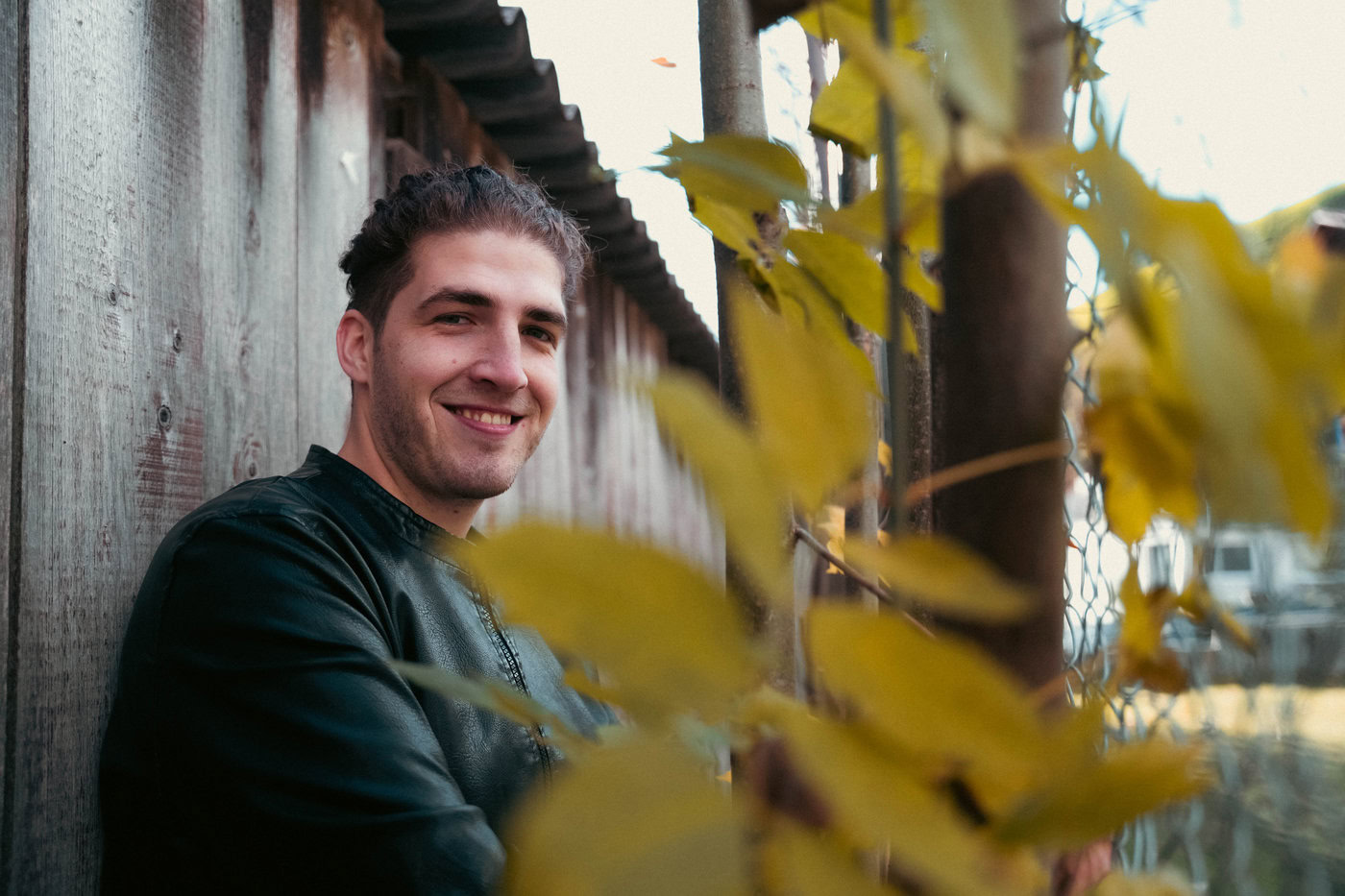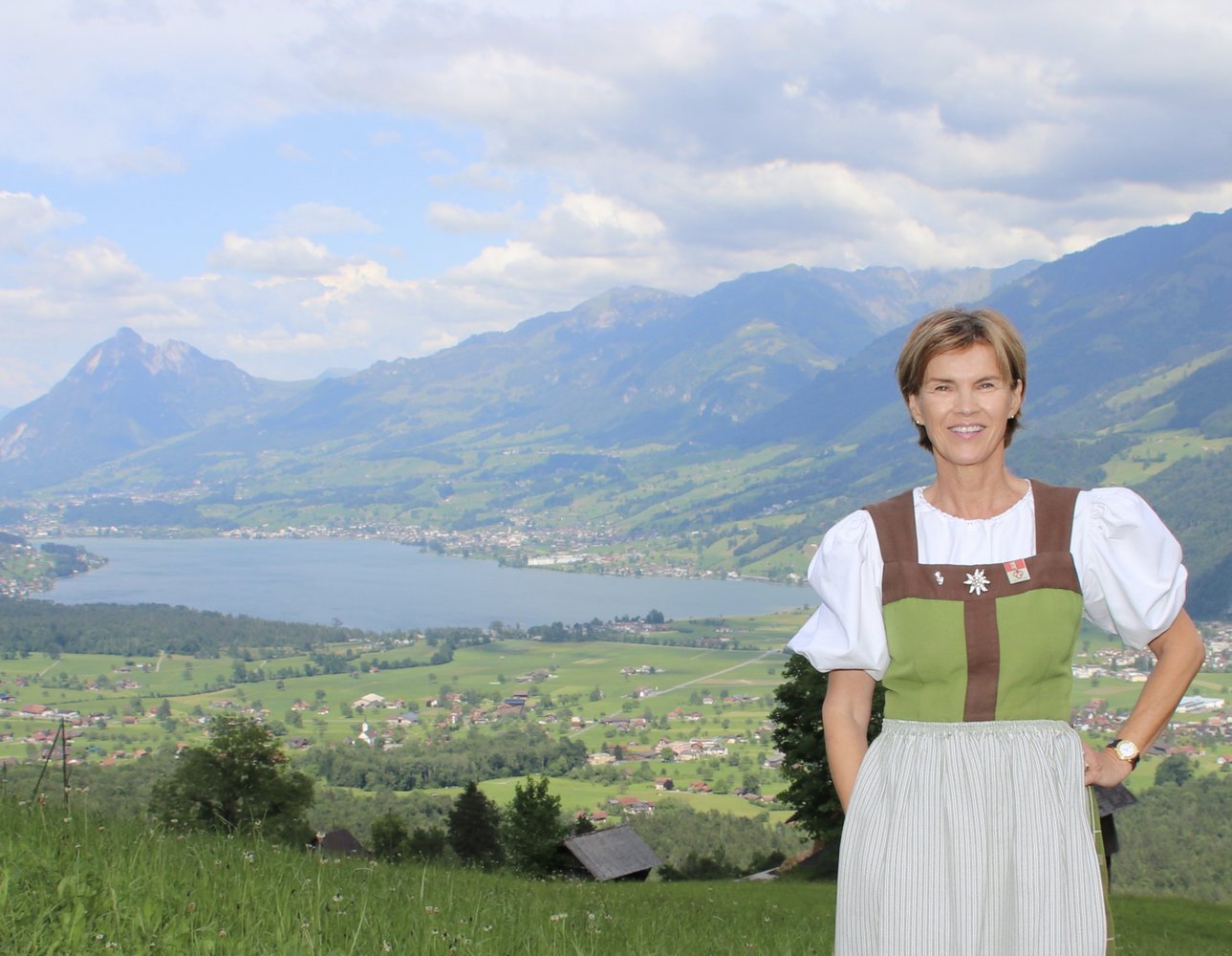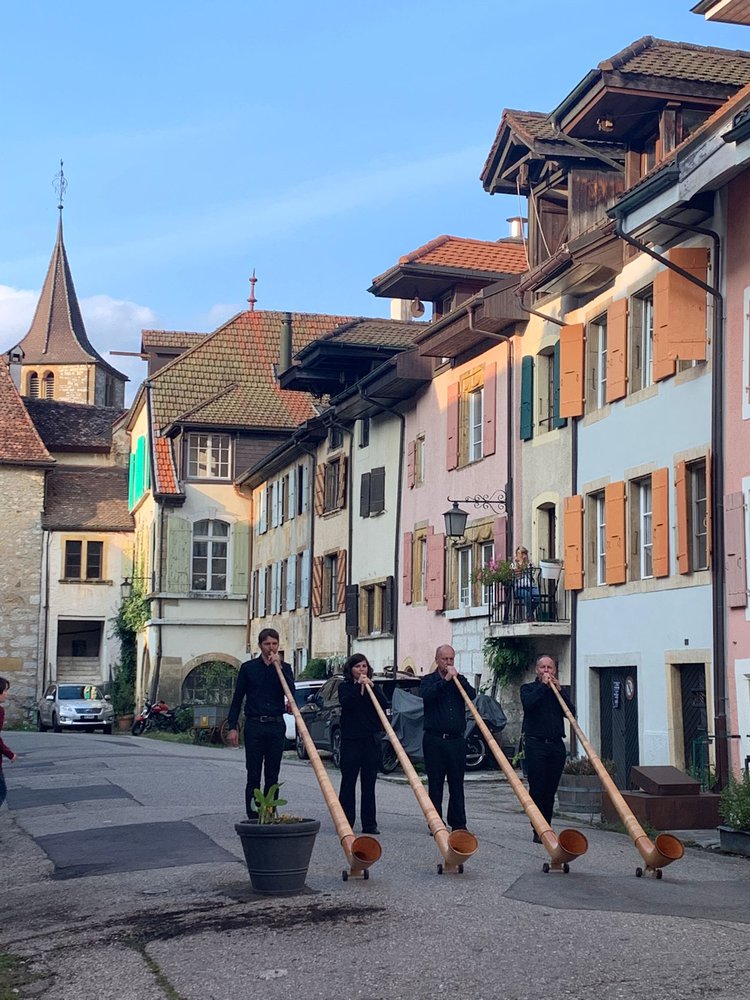3 traditional Swiss instruments
Swiss music schools are no longer just teaching piano, guitar or drums - traditional instruments such as the Schwyzerörgeli, yodeling and the Alphon are also on offer in all regions. Three music teachers report.

It is light and easy to transport, and it works both as a solo and as an accompanying instrument - two interesting plus points for the Schwyzerörgeli. The right hand plays the melody and the left hand plays the accompaniment, usually with three melody lines and two bass lines. Dominik Flückiger, musician, composer and music teacher, has been playing the Schwyzerörgeli since childhood and now teaches at three music schools in addition to his concert activities: in Stans, Rottal and Lucerne.
Is the Schwyzerörgeli on trend?
"We've been hearing for years that the Schwyzerörgeli is booming - but I don't think it's ever not been booming," he says. Nevertheless, he notes that the attitude of today's young people towards the Örgeli and country music has changed: "As a child, I had to justify playing the Örgeli, but today it's considered cool." He sees the reason for this in the fact that musical styles are more mixed today and that there are more and more musicians who also make modern music with traditional instruments - like himself, who not only plays Ländler with the Schwyzerörgeli, but also explores the limits of the instrument in all (stylistic) directions.
Equipment for the Stubete
He mainly teaches children at music schools - with the aim of ensuring that pupils know the most common time signatures and keys of Swiss folk music and can play along spontaneously at a Stubete. "I cultivate both traditional and new folk music with my students," he says. He therefore tends not to include pop pieces in his repertoire, but more modern folk music that incorporates influences from pop, jazz and international folk music.

Everyone can learn to yodel
Yodeller Silvia Rymann has also been asked time and again for years whether interest in yodelling has increased. "The question shows that interest has always been high, which of course makes me very happy"she says. She teaches at the Neuenkirch music school in the winter months when she is not on the road or performing. "Anyone who can sing well can also learn to yodel""But it takes time, bite and a little talent to reproduce the yodeling technique - the change between chest and head voice or the tongue beat - in a cultivated and perfect way," she says. Similar to the alphorn, yodelling is also said to have originated for communication reasons - to pass on information or the state of health of the alpine herdsman from alp to alp. "You can't prove this 100 %"Rymann says with a smile, "but it's always a nice story!" However, there is evidence that yodeling is not only widespread in Switzerland, but throughout the entire Alpine region, with different yodeling techniques in each region.
Yodeling Taylor Swift songs - why not?
Silvia Rymann teaches both adults and children, and is always impressed by how quickly the younger ones can put things into practice. She includes both classics and new compositions in her repertoire. She can also imagine arranging pop songs for yodelers: "I'm very open to that. For example, if young people want to sing a Taylor Swift song and integrate a yodel, why not?" Trying something out is nice and important, but the classic yodel songs are wonderfully timeless and should be left to stand. She herself also likes to sing songs without yodeling and listens to a lot of other music. But basically, she is already completely fixated on yodeling.

Alphorn - simple and yet difficult
Of course, the alphorn should not be missing from the list of traditional Swiss instruments. "It's simply a wonderful instrument," says Valentin Faivre, who plays on the Conservatoire de musique neuchâtelois (CMNE) teaches eight adult students. "The sound is pure and full of natural harmonies - even though it only consists of a simple wooden tube." However, it is precisely because of its simplicity that the alphorn is difficult to play. Although the technique is similar to that of other brass instruments, to which it belongs, the challenge lies in the fact that all sounds have to be produced using only the mouth and air pressure. As only natural tones can be played, the repertoire is limited - but beginners can quickly improvise.
The alphorn at Creux-du-Van
"Playing the alphorn is like yoga," says one of Valentin Faivre's students, "It's contemplative, you're in touch with your surroundings and nature. It gives you a feeling of peace, contentment and calm, which is very relaxing in these times." Another student remembers standing with his grandfather at Creux-du-Van as a six-year-old and hearing an alphorn for the first time in his life: "That's a moment I'll never forget!" He hopes to soon be able to play well enough himself to play in nature and make people happy.






